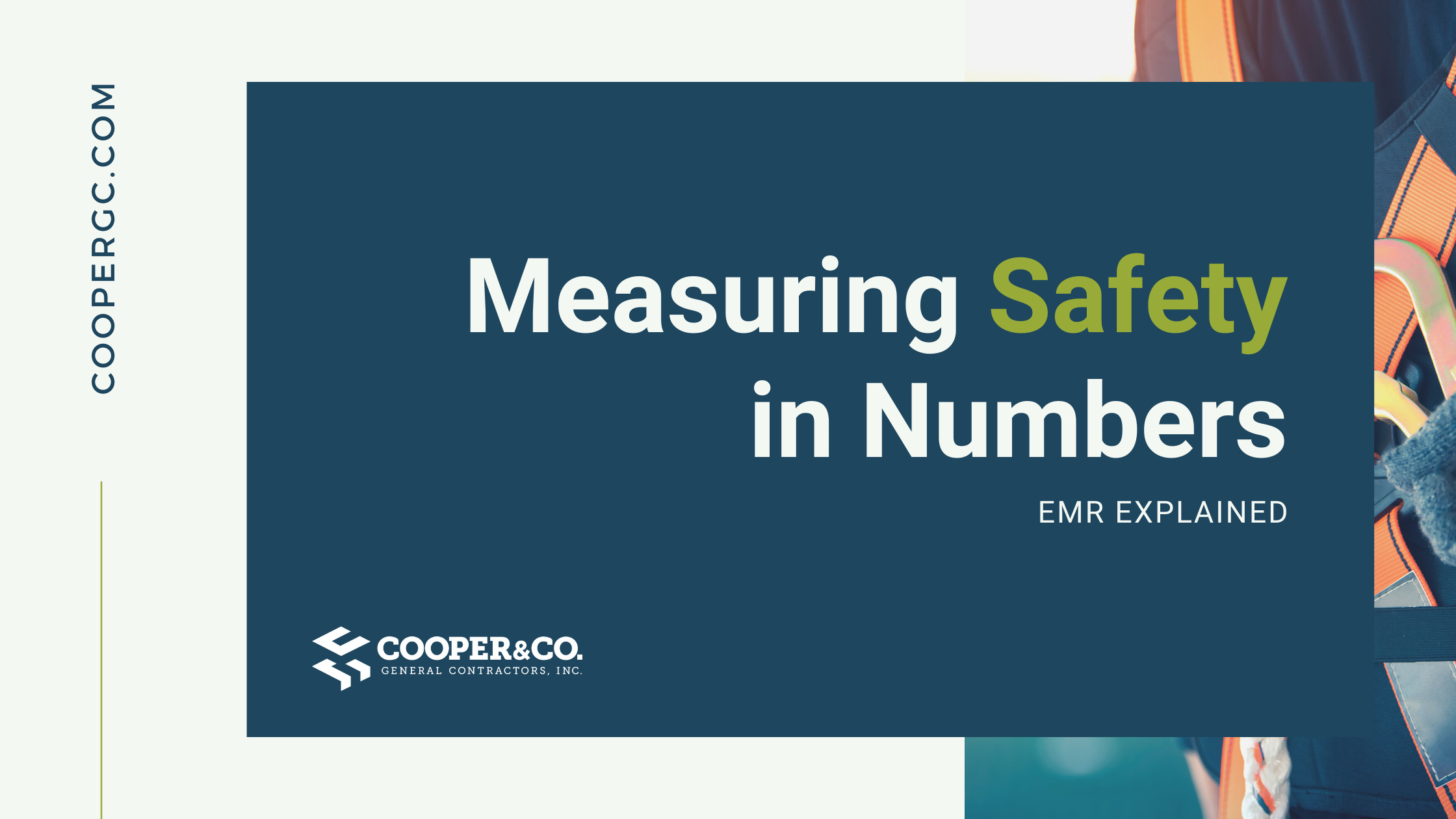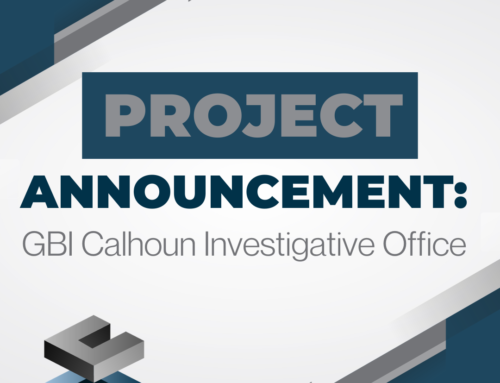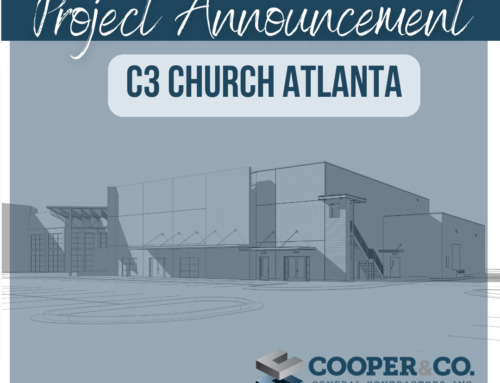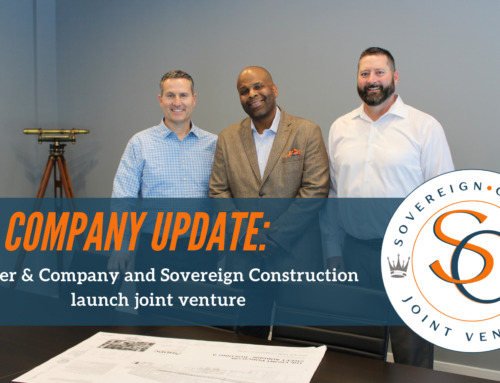Measuring Safety in Numbers
We are often asked by project owners to share our most recent EMR rating each year to determine if Cooper & Company is a qualified contractor for their projects. So, if you have ever asked what an EMR is, why it matters, and how is it calculated; then we have answers for you.
What is an EMR?
An EMR —also known as an experience modification rating or MOD rating — was designed as a guideline for the insurance industry to help price workers’ compensation insurance premiums. It is almost like a credit score for a third party to consider our firm’s safety history as an indication of future risk. For an insurance company, this is critical when evaluating a construction company to gauge the past cost of injuries and future chances of risk. The EMR number reflects that evaluation.
In the construction industry, the average EMR (or point at which your company is no more or less risky than any other) is valued at 1.0. A firm whose EMR dips below 1.0 is considered to be safer than most. A firm whose EMR rises above 1.0 is considered to be a riskier investment. For the construction firm it is important because it determines the rate of insurance premiums. Higher EMR’s can also prevent a firm from bidding on certain projects, securing skilled labor, and result on bid pricing being higher than other firms.

Determining your EMR
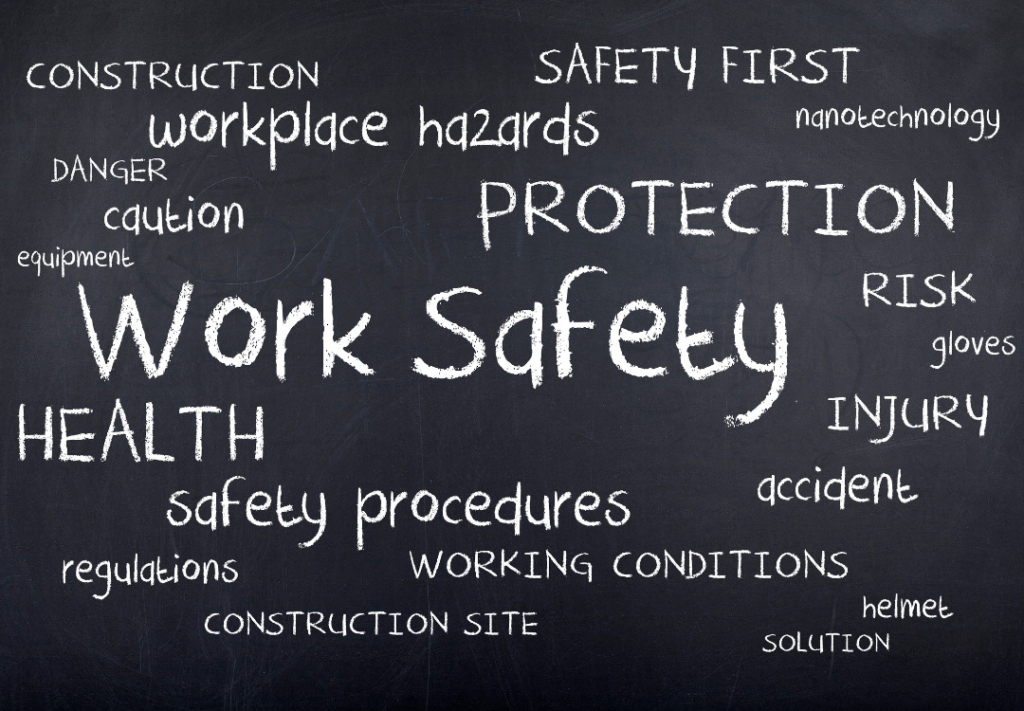
An EMR rate is based on actual insurance and workers’ compensation claims that have been reported to the National Council on Compensation Insurance (NCCI) over the course of the last five years. Any individual claim is then analyzed using a detailed EMR worksheet that weighs factors including what kind of incident took place and the cost of the claim. Because of the way it is calculated, the size of a firm’s payroll can translate to a higher EMR for smaller contractors simply because of the size of their workforce.
Boosting Your EMR
Contractors have options for improving their EMR and reducing their premiums. These options all start with effective safety training. Put simply – when there are no jobsite injuries then there is no reason for any claims.
Cooper’s Methodology to Keep Our EMR Below Industry Average:
Cooper implements all federal, state, local, and company safety and health regulations from the first day of the project. Our team conducts a Pre-Task planning and Job-site Hazard assessment.
All of Cooper’s team members receive OSHA training and certifications that allow them to be aware of critical jobsite safety areas such as Scaffolding, Ladders, Fall Protection, PPE Equipment, and Hazard Communication.
Cooper meets with all workers on the jobsite regularly to discuss safety. During these meetings, the team proactively addresses any possible issues, provides reminders about jobsite safety, and goes over new developments on the jobsite.
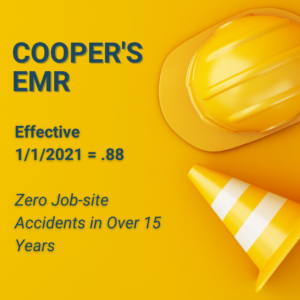
Cooper also implements a management/safety team on each jobsite that includes introducing a self-monitoring program and enforcing a personal protective equipment program. These include daily site inspections.
For our team and future clients, it is important to understand how our EMR is determined and how it affects who we work with and why you should want to work with us as a contractor. Cooper’s EMR rating has consistently remained below 1.0 for decades as we remain committed to putting safety first in all our projects. Cooper’s EMR effective 2021 is 0.88.

